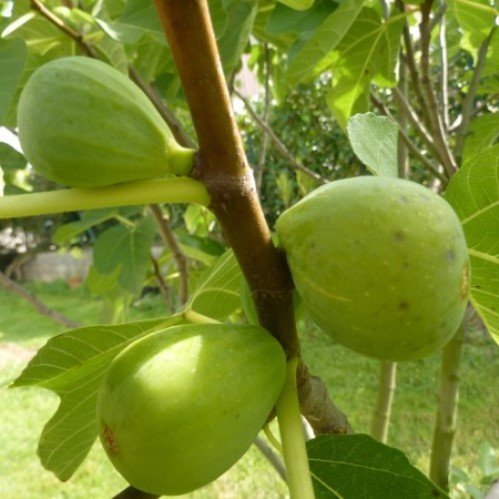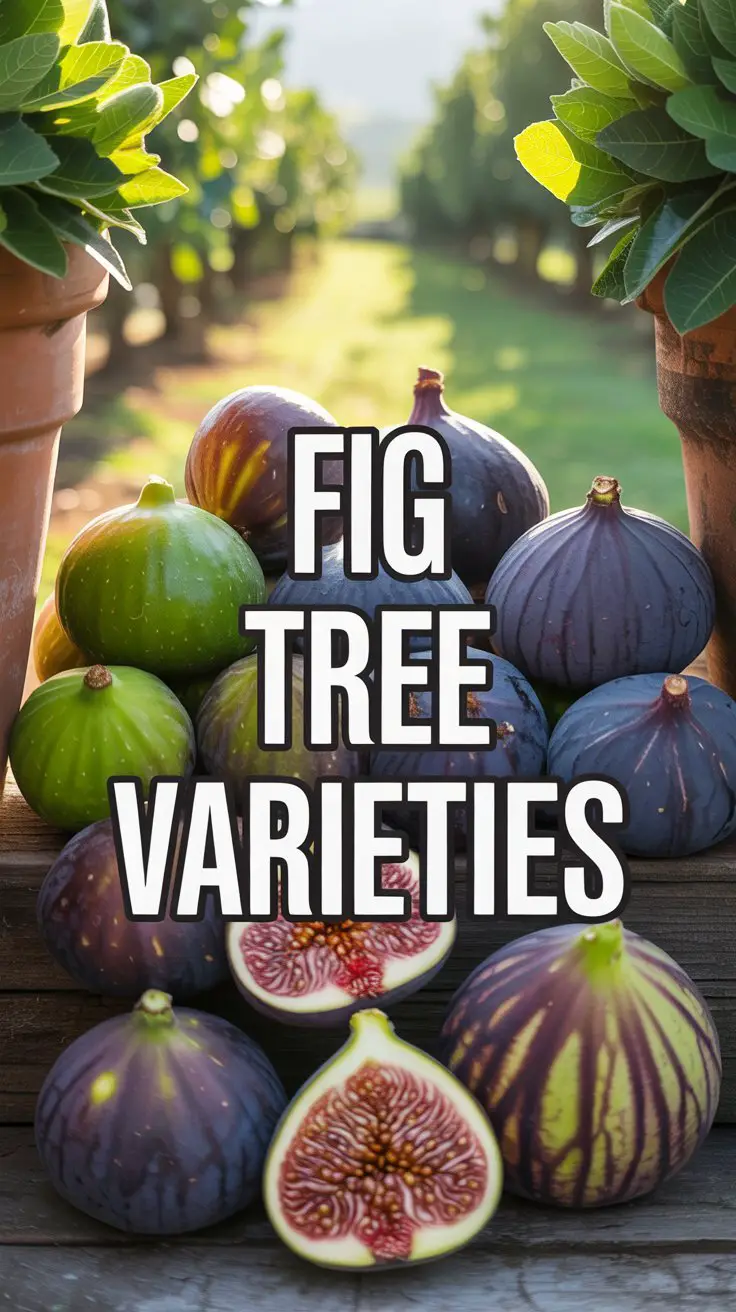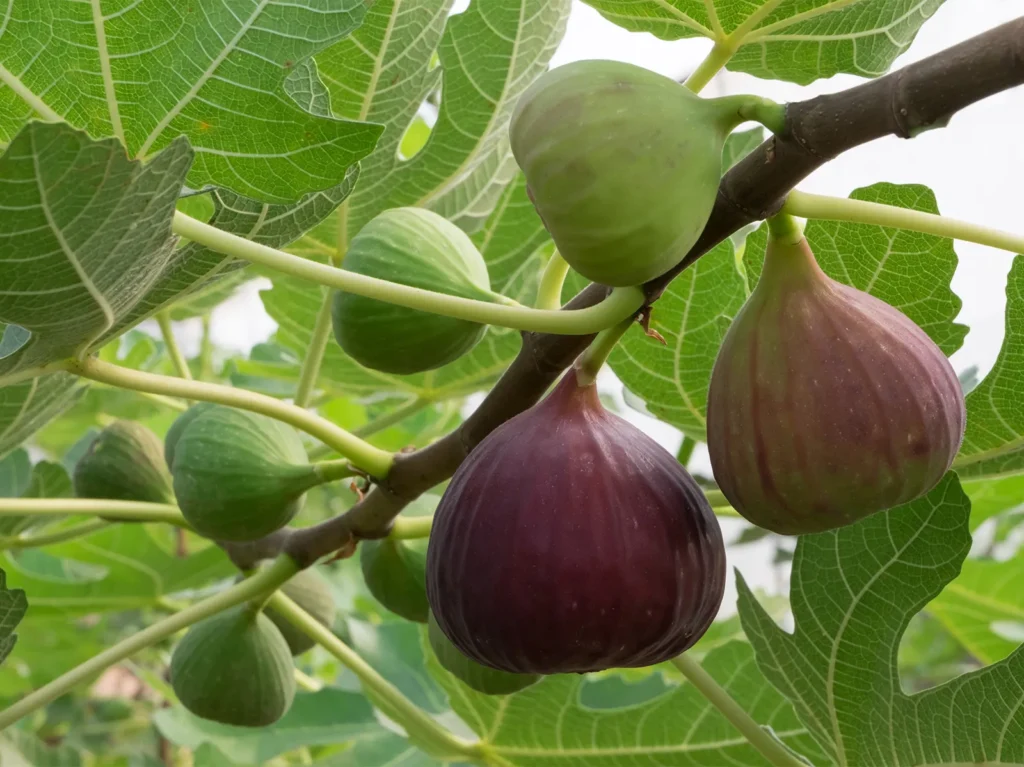Discover the different types of fig tree varieties, popular picks, and growing tips. Find the sweetest fig variety and the best fig variety for your USA garden!

Hi there! I’m Ashley Scott, and I’ve been gardening for over 10 years. One of my favorite plants to grow is the fig tree. Figs are not only delicious but also have a fascinating history and are surprisingly easy to grow in many climates across the USA. In this article, I’ll walk you through everything you need to know about fig tree varieties, from the different types to the sweetest ones, and even how to grow your own. Whether you’re a seasoned gardener or just curious about figs, I’ve got you covered with simple, fun info—even kids can understand it! Let’s get started!
Fig trees, known scientifically as Ficus carica, have been around for thousands of years, loved by ancient folks in places like the Mediterranean. They give us sweet, juicy fruits and have pretty, lobed leaves that look great in any garden. What I love most is how many fig tree varieties there are—each one has something special to offer. Some are perfect for snacking fresh off the tree, while others are awesome for drying or turning into jams. Plus, with a little care, they can grow almost anywhere in the USA!
In this guide, I’ll break down the main types of fig trees, share some popular varieties (imagine them with pictures!), and tell you which ones are the sweetest. I’ll also give you some easy tips on growing your own fig tree so you can enjoy fresh figs at home. By the end, you’ll know exactly which variety is right for your garden!
Types of Fig Trees
Before we jump into specific fig tree varieties, let’s talk about the four main types of fig trees. Each type is a little different, especially in how they make fruit.
1. Common Figs:

These are super popular for home gardens because they don’t need any special bugs to make fruit. You just need one tree, and boom—figs! They’re awesome for eating fresh, drying, or making tasty treats.
2. Smyrna Figs:

These need a tiny wasp called a fig wasp to pollinate them, or they won’t grow fruit. They’re usually dried and sold in stores as dried figs.
3. San Pedro Figs:

These trees are cool because they can produce two batches of figs each year. The first batch doesn’t need pollination, but the second one does, like Smyrna figs. It’s a bit tricky for home growers, though.
4. Caprifigs:
These are the “boy” fig trees—they make pollen but no yummy fruit. They’re only around to help pollinate Smyrna and San Pedro figs.
For most of us growing figs at home, Common Figs are the easiest and best choice. They’re simple to care for and give you delicious figs without any fuss. Next up, I’ll show you some popular Common Fig varieties you might want to try!
Popular Fig Tree Varieties
There are tons of fig tree varieties out there—hundreds, actually! Here’s a top 10 fig varieties list of some favorites that grow well in the USA. Imagine these with pictures showing off their cool colors and shapes!
- Celeste Fig Tree: Nicknamed the “sugar fig,” this one’s a star for its sweet, honey-like taste. The figs are small to medium, with light brown or violet skin and pink insides. It’s tough enough for cooler places, too!
- Brown Turkey Fig: This variety is a champ—super reliable and makes lots of figs. They’re medium to large with brownish-purple skin and pink flesh. Perfect for eating fresh or drying.
- Black Mission Fig: Love a bold flavor? This one’s for you. It has big figs with dark purple or black skin and deep red insides—great for snacking or drying.
- Chicago Hardy Fig: Built for cold weather, this tree can handle temperatures down to -10°F! Its figs are medium-sized with purple skin and red flesh—ideal for northern gardeners.
- LSU Purple Fig: Made by Louisiana State University, this one loves humid areas. It grows sweet, juicy figs with purple skin and light pink insides.
- Kadota Fig: Known as Dotatto too, this variety has greenish-yellow skin and a sweet, gentle flavor. It’s awesome for canning or drying.
- Desert King Fig: Great for cooler spots, it gives you big, green figs with red insides. It ripens early, so you get figs sooner!
- Osborn’s Prolific Fig: This tree pumps out tons of medium-sized figs with bronze skin and amber flesh. Super tasty fresh!
- Violet Sepor Fig: A fun one with green and purple striped skin—like a clown! It’s sweet with a berry-like taste.
- Mary Lane Fig: Also called Jelly Fig, it has greenish-yellow skin and a tangerine-sweet flavor. Yum!
These are some of the best fig varieties to start with. When picking one, think about your weather, garden space, and how you want to eat the figs. Want more ideas? Check out a fig tree varieties chart from the University of California for a big list!
Sweetest Fig Varieties
Got a sweet tooth? Let’s talk about the sweetest fig varieties! Here are my top picks that taste like nature’s candy:
- Celeste Fig: Yep, the “sugar fig” again! Its honey-sweet flavor is unbeatable for eating fresh.
- Dotatto Fig (Kadota): Big, greenish-yellow figs with a mild, super-sweet taste—perfect for snacking or preserves.
- Panache Tiger Stripe Fig: This one’s green and yellow stripes make it look wild, and its strawberry-sweet flavor is a treat.
- Violette de Bordeaux Fig: Small but mighty, with dark purple skin and a rich, berry-sweet taste. A fancy favorite!
I’ve got a soft spot for the Celeste fig tree. The first time I picked one from my own tree, it was like eating candy straight from the garden—sweet, juicy, and amazing. That’s when I fell in love with figs! If you’re after the sweetest fig variety, try one of these. Just make sure your tree gets lots of sun and water to boost that sweetness!
Growing Fig Trees
Want to grow your own fig tree varieties? It’s easier than you think! Here’s how to get started:
- Pick a Sunny Spot: Fig trees love sunlight—give them 6-8 hours a day. They also like soil that drains well, not too soggy.
- Planting: Dig a hole twice as wide as the roots and just as deep. If you’re using a pot, get a big one with holes at the bottom.
- Watering: Keep the soil damp but not wet. Water once a week, or more if it’s hot out.
- Trimming: You don’t need to cut much. In late winter, snip off dead or messy branches.
- Feeding: Add some plant food in early spring and mid-summer to help it grow strong.
Need more details? I’ve got a guide on how to grow fruit trees over at my site. Some varieties, like Chicago Hardy or Celeste, are tougher in cold weather, so they’re great if you’re in a chilly area. For more growing tips, the Texas A&M AgriLife Extension has awesome advice!
Conclusion
Fig trees are such a fun addition to any garden, with tasty fruit and pretty leaves. With so many fig tree varieties to pick from, there’s one for every taste and climate in the USA. Love sweetness? Go for Celeste or Violette de Bordeaux. Want something sturdy? Try Brown Turkey or Chicago Hardy.
If you’re new to figs, don’t worry—they’re pretty easy to grow with just a little love. There’s nothing better than picking a fresh fig from your own tree! Wondering, “What’s the best fig variety for my garden?” It depends on where you live and what you like. Chicago Hardy rocks in cold spots, while Celeste is a sweet dream for warm areas.
Explore more gardening goodies on my site, USA Garden Hub, or dig into expert info from places like North Carolina State University Extension. Happy gardening!


